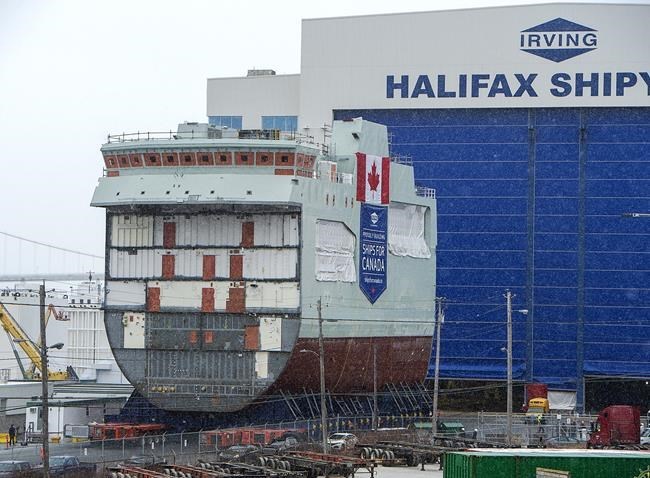OTTAWA ‚Äî Federal bureaucrats are warning that more cost overruns and delays are on the horizon for the delivery of new ships to saπ˙º ¥´√Ω‚Äôs navy and coast guard, as ‚Äúsignificant challenges‚Äù batter Ottawa‚Äôs multibillion-dollar shipbuilding program.
That includes uncertainty around the cost of building 15 new warships for the navy, which was already slated to be saπ˙º ¥´√Ω‚Äôs largest-ever military procurement with the government's estimated $60-billion price tag.
Top procurement, navy and coast officials are blaming the COVID-19 pandemic, supply chain problems, labour shortages and rising costs for steel and other material for the latest setbacks, the full impacts of which are still being assessed.
“Simply put, ships are not being built fast enough and are costing more as a result,” Defence Department procurement chief Troy Crosby told a parliamentary committee in recent testimony.
The frank assessment comes as the Liberal government faces pressure from the NATO military alliance and others to spend more on defence, raising one possible area for large new investments without having to undertake a significant policy rethink.
Yet whatever opportunity for increased spending the problems represent will be cold comfort to the navy and coast guard, as each passing day increases the threat another one of their aging ships will join the growing list of vessels forced into retirement before a replacement is ready.
Extra sunk costs are also growing as more taxpayer dollars are shovelled into projects that have already received billions in additional funding without any commensurate added benefit to saπ˙º ¥´√Ω.
Federal officials told the standing committee on government operations and estimates that they are now assessing the specific impacts with Irving Shipbuilding in Halifax and Seaspan Shipyards in Vancouver.
Irving is building six Arctic patrol ships for the navy and coast guard as well as the fleet of 15 new warships that will serve as the navy’s backbone for the next 40 years. Seaspan is building several research vessels for the coast guard and two navy supply ships.
Every one of those projects had seen delays and cost overruns since the shipyards were selected in 2011 for their respective work packages, which officials blamed on a lack of experience in government and industry.
While the government and shipyards have since learned many hard-earned lessons, Public Services and Procurement saπ˙º ¥´√Ω assistant deputy minister Simon Page said the procurement plan is facing ‚Äúsignificant challenges.‚Äù¬Ý
“We now have to deal with the additional costs shipyards are charging and the new schedules,” he said. “We are working closely with third parties to review everything and make sure … the costs are justified. We are working with them to ensure performance.”
Crosby for the first time acknowledged “uncertainty” in the cost of the navy’s new warship fleet, after having stood by the government’s $60-billion estimate in recent years. That includes having dismissed a $77.3-billion estimate from the parliamentary budget office.
In fact, Crosby specifically referenced the PBO’s finding last year that a one-year delay in building the vessels represents a $2.2-billion shortfall due to inflation and other escalating costs.
The coming delays will also add pressure on saπ˙º ¥´√Ω‚Äôs aging navy and coast fleets, each of which has lost several ships in recent years as breakdowns and other issues have forced decades-old vessels into retirement before their replacements are finished.
Those include the navy’s two support ships and three destroyers, as well as several coast guard vessels.
Canadian Coast Guard commissioner Mario Pelletier said in a recent interview his agency plans to use charters as it waits for a new ocean research vessel to replace the CCGS Hudson, which was forced to retire after 59 years in service in January.
The new offshore oceanographic science vessel is one of those projects that has been hit hard by delays and cost overruns, with its original $100-million budget having skyrocketed to almost $1 billion last year.
At the same time, Pelletier said the coast guard needs its first of six medium icebreakers in the water by 2030. While the vessels are likely to be built by Chantier Davie, the government has yet to officially add the Quebec-based company to the shipbuilding program.
Officials told the parliamentary committee that negotiations with Davie are continuing, but would not say when they would be finished. Davie was selected for addition more than two years ago, but negotiations to finalize the deal have been shrouded in mystery.
This report by The Canadian Press was first published Apr. 6, 2022.
Lee Berthiaume, The Canadian Press



